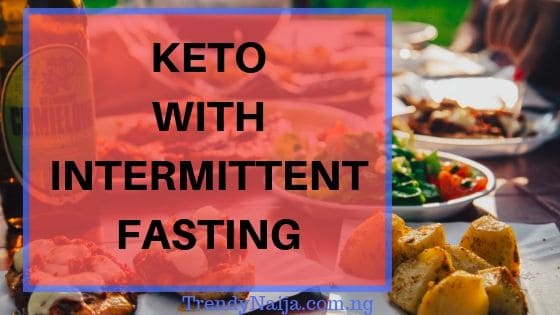
Practically speaking, ketogenic diet and intermittent fasting are more alike than you may accept. When joining the two practices, they might almost certainly synergistically cooperate toward shared objectives of fat loss and improved metabolic well being.
In spite of the distinctions in the eating regimens, they have two major similitude: both bring about ketone creation and can likewise burn body fat. Together, they may assist your weight reduction objectives.
Let’s Customized Complete Intermittent Guide That Will Meet Your Specific Need
Be that as it may, where do they fit in together? adherents of intermittent fasting are utilizing the system to improve weight reduction, insulin affectability and other health markers. The keto diet targets a considerable lot of similar objectives, such as reshaping digestion and improve body organization. This article will discuss in detail, ketosis, intermittent fasting and combining keto with intermittent fasting.
KETOSIS
The ketogenic diet has been around for quite a few years, yet has increased in in the course of the last a few years. While a few diets empower utilization of less calories, the ketogenic diet depends on low sugar admission as opposed to concentrating on calorie consumption.
Keto can be depicted as a low-carb, high-fat diet which instigates creation of ketones from fat, prompting a condition of ketosis: the existence of ketones in the blood at more than 0.5mM. This is vastly different than the customary western high-carb diet.
Dietary carbohydrates get taken up and utilized as energy through blood sugar (glucose), or it is put away as a particle called glycogen in the liver. Glycogen is gradually discharged between meals to keep blood glucose and energy levels stable. Once carbs are expelled from the equation, the body in the long run figures out how to utilize alternative fuel sources, in this case, fat, for energy as glycogen stores are drained.
There are two different ways to instigate ketosis. The first, called endogenous ketosis, is when ketosis is activated through eating routine or fasting. For this situation, the body is making its own ketones, which means the body is ketogenic. It can take long periods of fasting or long stretches of consuming less calories to accomplish endogenous ketosis.
The ketogenic diet is regularly confused by the majority as a high-fat eating regimen that highlights bacon, margarine, and oil as its fundamental segments. While you may enjoy these specific kinds of food, the principle quality of keto is that it expects weight watchers to devour practically no net carbs. In case you’re on keto, you should go for a carb consumption around fifty gram every day, which is a truly low sum.
The second way to incite ketosis is called exogenous ketosis. This implies ketones are acquainted with the body from an outside source- ketone enhancements. This body is still in ketosis (since its blood ketone levels are raised) yet it’s not ketogenic (on the grounds that the body isn’t delivering its own ketones).
INTERMITTENT FASTING
Intermittent fasting is actually what it name implies: not eating for a specific time frame.
It is a diet plan that allows you to eat any meal of your choice for a while and not eating for another while. Intermittent fasting, as opposed other diet plan, is not against consumption of calories as it is concerned about the time you eat.
Superficially, removing meals for a set timeframe appears to be flawlessly basic. Yet, new research is propelling our insight into the best planning for meals and the supportive changes to our science that happen during fasting.
How intermittent fasting works
When you eat carbohydrate, the pancreas starts to secrete insulin-activating carb take-up and capacity. Carbs in our meals (and to a lesser degree, protein) trigger the arrival of the hormone. The insulin causes the body to store any excess energy as glycogen or as fat for later use. A portion of the fat is stored in the liver;however, its greater part ends up fat accumulation in the body.
Insulin additionally switches off the procedures that discharge fat from fat deposits, implying that fat is becoming stored and not utilized as fuel. When you practice intermittent fasting then again, energy level is lower, insulin levels start to fall and fat consuming increases.
By expanding the length of time, the body is in a fasted state, there will be more opportunity for the body to take advantage of stored energy. In evolution, most species would routinely enter a fasted state. Predators will in general eat bigger parts at one given time and may not devour anything for a few days.
There is nothing wrong with once in a while fasting for longer time frames and it really has many medical advantages (however, seek your doctor’s consent before doing this).
Caloric Restrictions
Basically, limiting the quantity of calories you expend will place the body into a fasted state. There is a typical conviction that missing a meal is awful for your digestion or general well-being. Honestly, we’re seeing more information in support of fasting. The three-meals daily norm has been standard in Nigerian weight control plans for quite a long time. Yet, obesity has increased. Diabetes and pre-diabetes have likewise increased.
Studies performed on animals have shown that those in a fasted state had longer life span contrasted with those that did not fast. It appears the advantages of fasting cannot exclusively be seen as short term, but also throughout a lifetime.
A fascinating eating routine that copies fasting is known as the Prolon Diet. The thought is to truly diminish insulin discharge while as yet making available, nutrients. It’s a low-protein, low-carb, high-fat eating routine with calorie admission extending from 770 – 1,100 calories for each day.
Studies have demonstrated a fast-mirroring eating regimen can improve biomarkers for maturing, diabetes and cardiovascular infection.
Benefits of intermittent fasting
Other than advantages for weight reduction, there are various favorable circumstances that go with intermittent fasting.
- Easier to oversee than conventional dieting: Preparing a solitary (or a couple, depending on your feeding window) meal every day is strategically simpler than setting up a few meals from a time management point of view. In addition, intermittent fasting spares you the headache of thorough meal preparing, or finding foods that agree to a particular eating regimen.
- Decrease in fat mass: Individuals who carry out intermittent fasting demonstrated a lessening in fat mass.
- Longevity: Studies have demonstrated that people who fast all the time can seem to have expanded life span. An examination was performed on rodents that ate just once every day and it found, when contrasted with different groups, those rodents had a longer lifespan paying little respect to the measure of food devoured.
- Improved well-being and digestion: Metabolic well-being might be improved with fasting by method for circadian biology, the gut microbiome, and modifiable way of life practices, for example, rest. Research has demonstrated that intermittent fasting may help improve blood lipids, glycemic control, control insulin levels, decline pulse, and decrease irritation.
- Boost cerebrum well-being: Fasting powerfully is a solid trigger for neurogenesis and beta-hydroxybutyrate (or BHB, one of the three ketone bodies), which can trigger the arrival of mind development factors.
- Speed up endurance adjustment: Fasting advances pathways associated with fat digestion, which may help perseverance execution—for instance, development of new mitochondria
- Reduced danger of diabetes: Through intermittent fasting, decreased insulin obstruction can help those with type 2 diabetes lower blood glucose levels and improve glucose.
COMBINING KETO AND INTERMITTENT FASTING
The ketogenic diet and intermittent fasting tap into comparable metabolic pathways thus they ought to have the option to cooperate synergistically.
The conspicuous juxtaposition: keto is a type of long-term dieting, focusing on a particular macronutrient target, and as such, limits what sorts of food you eat. Intermittent fasting happens for the time being and limits just when you can eat, with no full-scale rules in the eating windows.
Be that as it may, However, as explored earlier with low-protein, high-fat, low-carb diets, focusing on keto during the eating windows may maintain the helpful metabolic pathways caused by fasting. A fascinating application is Peter Attia’s “Nothing burger,” in which he led seven days in length fast between about fourteen days of dietary ketosis.
Keto and intermittent fasting techniques can move in the direction of a similar objective: utilizes stored fat for energy and put the body in a condition of ketosis. Both exhaust the group of glucose. In case you’re intermittently fasting, it might almost certainly place you in a condition of ketosis more rapidly than keto dieting alone.
Let’s Customized Complete Intermittent Guide That Will Meet Your Specific Need
There are not so many researches on keto and intermittent fasting together. As our comprehension of the science supporting both develops, we can see clear synergies; this represents the two together can be a decent mix.

